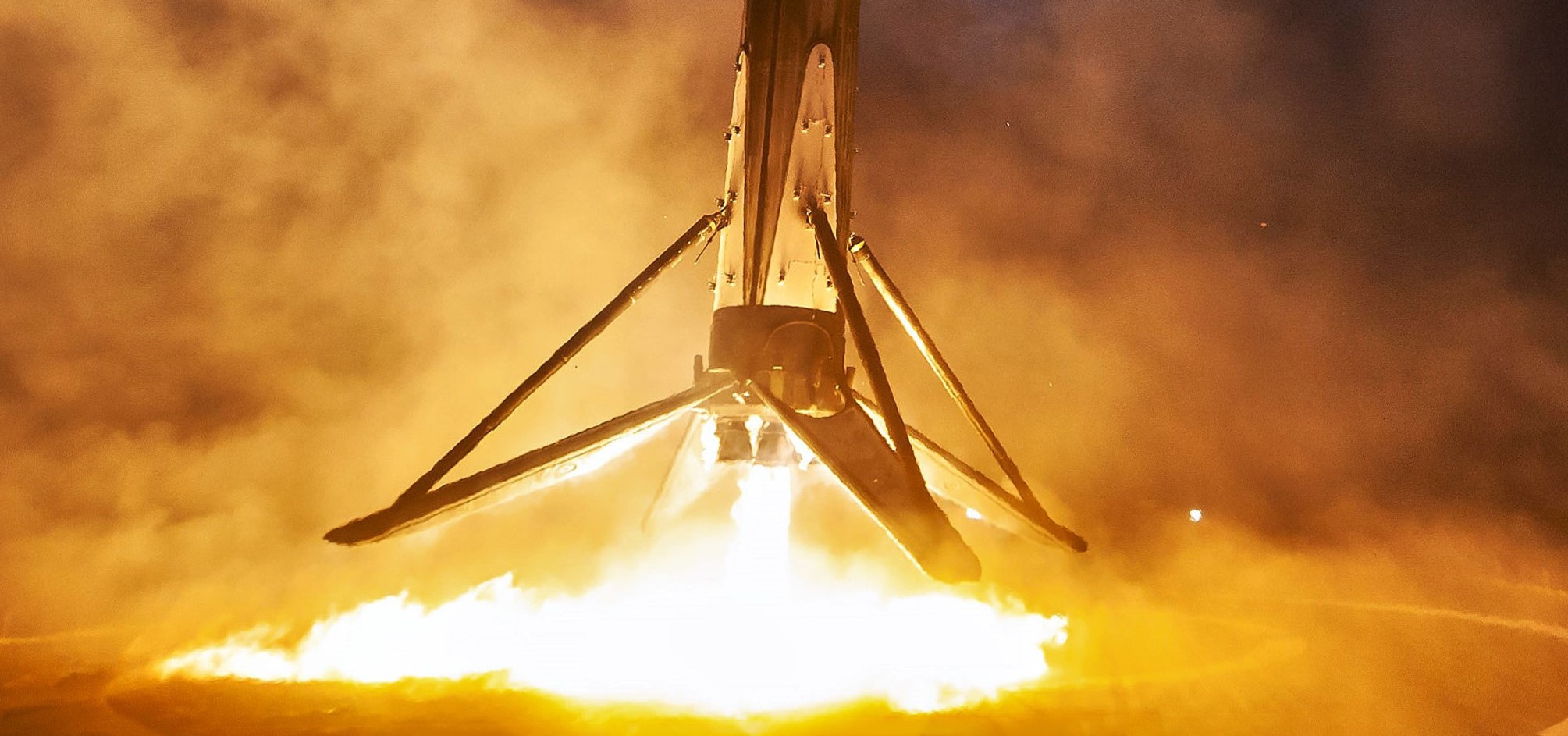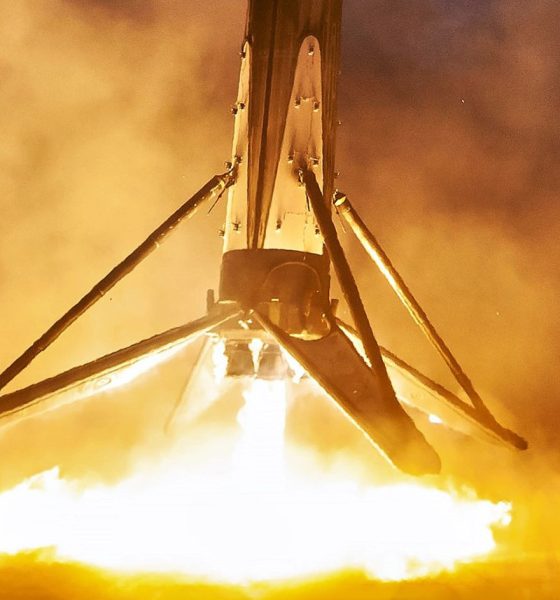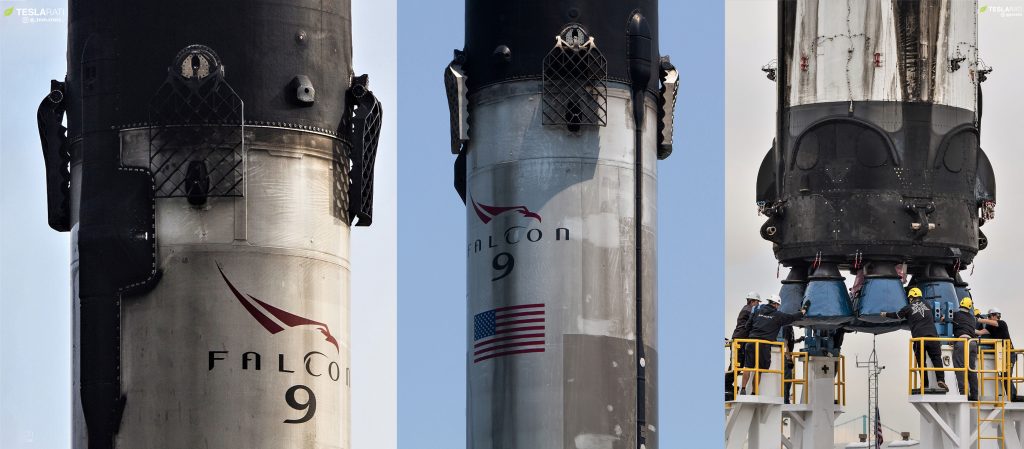

News
SpaceX Falcon 9 to attempt unusual drone ship landing after space station resupply launch
SpaceX’s workhorse Falcon 9 rocket is ready for the company’s 12th launch this year, set to send a reused Cargo Dragon spacecraft on its way to the International Space Station (ISS) and conclude with a surprise drone ship landing attempt.
SpaceX is about eight hours out from launching CRS-19, set to become Cargo Dragon’s 20th orbital mission and 19th space station rendezvous and resupply. It will also be the second time a single Cargo Dragon capsule flies its third orbital mission and the eight Dragon reuse overall, continuing proof that SpaceX is by far the leading global expert in launch vehicle and orbital spacecraft recovery and reuse.
Set to lift off no earlier than 12:51 pm ET (16:51 UTC), December 4th, CRS-19 will see flight-proven Cargo Dragon capsule C106 launch atop a new expendable trunk and upper stage, as well as a new Falcon 9 booster – an increasingly unusual sight. After a Falcon Heavy Block 5 launch completed earlier this year, SpaceX passed a threshold where it had recovered more boosters after launch than it had expended, equating to 40+ successful landings. Since Falcon 9 Block 5 – a reusability and reliability-focused upgrade – debuted in May 2018, sooty (i.e. flight-proven) boosters have become an increasingly common sight.
Between Falcon Heavy’s two 2019 launches, four new boosters marked their flight debut, while Falcon 9 missions have only debuted two new boosters – soon to be three after CRS-19. In other words, as of today, 7 of Falcon 9’s 9 2019 launches have involved flight-proven boosters – more than 75%. In fact, Block 5 is proving so robust that SpaceX has actually intentionally slowed down booster production at its Hawthorne, CA factory, hoping to instead treat its currently flightworthy rockets as a true fleet, cycling through them to launch dozens of missions.

Cargo Dragon with a (rare) side of drone ship
Beyond the rarity of a new booster’s launch debut and Cargo Dragon’s increasingly impressive history of reusability, CRS-19 – as discussed at length in earlier articles – will also see Falcon 9 booster B1058 attempt to land aboard drone ship Of Course I Still Love You (OCISLY) some 350 km (200 mi) downrange. Aside from CRS-17’s Crew Dragon explosion-related drone ship landing in May 2019, all CRS mission booster recoveries since April 2016 have landed (or at least attempted to land) at SpaceX’s Cape Canaveral-based LZ-1 or LZ-2 landing pads.
Close to shore by average drone ship landing standards but a cross-country jaunt compared to CRS-17’s unusual May 2019 booster landing aboard OCISLY, SpaceX explained the odd booster recovery plans in a routine prelaunch press conference yesterday afternoon.
“[After Dragon is deployed and CRS-19’s launch concludes], SpaceX is going to perform an…ambitious coast test, requiring larger propellant margins that must be withdrawn from Falcon 9’s own landing propellant budget.”
Teslarati — December 3rd, 2019

In short, SpaceX needs to leave more propellant for the upper stage, thus limiting B1058’s ability to boost all the way back to the Florida coast. Instead, it will only partially slow its Eastbound velocity, still leaving enough margin for drone ship OCISLY to station relatively close to the Florida coast compared to more common (and more demanding) booster recovery profiles.
All told, SpaceX says Falcon 9’s upper stage will attempt to perform a six-hour coast (“thermal test”) after CRS-19, concluding with a final Merlin Vacuum engine reignition and deorbit burn, similar to a test performed after CRS-18’s recent July 2019 launch. These tests are meant to satisfy what SpaceX described as the requirements of “other customers”, of which the USAF is by far the best known for its long-duration coast demands. For an upper stage powered by cryogenic liquid fuel, remaining fully functional for hours in orbit is one of the single greatest technical challenges that face modern rocketry.
Tune in around 12:30 pm ET (16:30 UTC) at the webcast below to watch Falcon 9’s CRS-19 launch and landing live.
Check out Teslarati’s Marketplace! We offer Tesla accessories, including for the Tesla Cybertruck and Tesla Model 3.

News
Tesla is seeing a lot of momentum from young Koreans in their 20s-30s: report
From January to November, young buyers purchased over 21,000 Teslas, putting it far ahead of fellow imported rivals like BMW and Mercedes-Benz.

Tesla has captured the hearts of South Korea’s 20s-30s demographic, emerging as the group’s top-selling imported car brand in 2025. From January to November, young buyers purchased over 21,000 Teslas, putting it far ahead of fellow imported rivals like BMW and Mercedes-Benz.
Industry experts cited by The Economist attributed this “Tesla frenzy” to fandom culture, where buyers prioritize the brand over traditional car attributes, similar to snapping up the latest iPhone.
Model Y dominates among young buyers
Data from the Korea Imported Automobile Association showed that Tesla sold 21,757 vehicles to the 20s-30s demographic through November, compared to BMW’s 13,666 and Mercedes-Benz’s 6,983. The Model Y led the list overwhelmingly, with variants like the standard and Long Range models topping purchases for both young men and women.
Young men bought around 16,000 Teslas, mostly Model Y (over 15,000 units), followed by Model 3. Young women followed a similar pattern, favoring Model Y (3,888 units) and Model 3 (1,083 units). The Cybertruck saw minimal sales in this group.
The Model Y’s appeal lies in its family-friendly SUV design, 400-500 km range, quick acceleration, and spacious cargo, which is ideal for commuting and leisure. The Model 3, on the other hand, serves as an accessible entry point with lower pricing, which is valuable considering the country’s EV subsidies.
The Tesla boom
Experts described Tesla’s popularity as “fandom culture,” where young buyers embrace the brand despite criticisms from skeptics. Professor Lee Ho-geun called Tesla a “typical early adopter brand,” comparing purchases to iPhones.
Professor Kim Pil-soo noted that young people view Tesla more as a gadget than a car, and they are likely drawn by marketing, subsidies, and perceived value. They also tend to overlook news of numerous recalls, which are mostly over-the-air software updates, and controversies tied to the company.
Tesla’s position as Korea’s top import for 2025 seems secured. As noted by the publication, Tesla’s December sales figures have not been reported yet, but market analysts have suggested that Tesla has all but secured the top spot among the country’s imported cars this year.
News
Tesla FSD fleet is nearing 7 billion total miles, including 2.5 billion city miles
As can be seen on Tesla’s official FSD webpage, vehicles equipped with the system have now navigated over 6.99 billion miles.

Tesla’s Full Self-Driving (Supervised) fleet is closing in on almost 7 billion total miles driven, as per data posted by the company on its official FSD webpage.
These figures hint at the massive scale of data fueling Tesla’s rapid FSD improvements, which have been quite notable as of late.
FSD mileage milestones
As can be seen on Tesla’s official FSD webpage, vehicles equipped with the system have now navigated over 6.99 billion miles. Tesla owner and avid FSD tester Whole Mars Catalog also shared a screenshot indicating that from the nearly 7 billion miles traveled by the FSD fleet, more than 2.5 billion miles were driven inside cities.
City miles are particularly valuable for complex urban scenarios like unprotected turns, pedestrian interactions, and traffic lights. This is also the difference-maker for FSD, as only complex solutions, such as Waymo’s self-driving taxis, operate similarly on inner-city streets. And even then, incidents such as the San Francisco blackouts have proven challenging for sensor-rich vehicles like Waymos.
Tesla’s data edge
Tesla has a number of advantages in the autonomous vehicle sector, one of which is the size of its fleet and the number of vehicles training FSD on real-world roads. Tesla’s nearly 7 billion FSD miles then allow the company to roll out updates that make its vehicles behave like they are being driven by experienced drivers, even if they are operating on their own.
So notable are Tesla’s improvements to FSD that NVIDIA Director of Robotics Jim Fan, after experiencing FSD v14, noted that the system is the first AI that passes what he described as a “Physical Turing Test.”
“Despite knowing exactly how robot learning works, I still find it magical watching the steering wheel turn by itself. First it feels surreal, next it becomes routine. Then, like the smartphone, taking it away actively hurts. This is how humanity gets rewired and glued to god-like technologies,” Fan wrote in a post on X.
News
Tesla starts showing how FSD will change lives in Europe
Local officials tested the system on narrow country roads and were impressed by FSD’s smooth, human-like driving, with some calling the service a game-changer for everyday life in areas that are far from urban centers.

Tesla has launched Europe’s first public shuttle service using Full Self-Driving (Supervised) in the rural Eifelkreis Bitburg-Prüm region of Germany, demonstrating how the technology can restore independence and mobility for people who struggle with limited transport options.
Local officials tested the system on narrow country roads and were impressed by FSD’s smooth, human-like driving, with some calling the service a game-changer for everyday life in areas that are far from urban centers.
Officials see real impact on rural residents
Arzfeld Mayor Johannes Kuhl and District Administrator Andreas Kruppert personally tested the Tesla shuttle service. This allowed them to see just how well FSD navigated winding lanes and rural roads confidently. Kruppert said, “Autonomous driving sounds like science fiction to many, but we simply see here that it works totally well in rural regions too.” Kuhl, for his part, also noted that FSD “feels like a very experienced driver.”
The pilot complements the area’s “Citizen Bus” program, which provides on-demand rides for elderly residents who can no longer drive themselves. Tesla Europe shared a video of a demonstration of the service, highlighting how FSD gives people their freedom back, even in places where public transport is not as prevalent.
What the Ministry for Economic Affairs and Transport says
Rhineland-Palatinate’s Minister Daniela Schmitt supported the project, praising the collaboration that made this “first of its kind in Europe” possible. As per the ministry, the rural rollout for the service shows FSD’s potential beyond major cities, and it delivers tangible benefits like grocery runs, doctor visits, and social connections for isolated residents.
“Reliable and flexible mobility is especially vital in rural areas. With the launch of a shuttle service using self-driving vehicles (FSD supervised) by Tesla in the Eifelkreis Bitburg-Prüm, an innovative pilot project is now getting underway that complements local community bus services. It is the first project of its kind in Europe.
“The result is a real gain for rural mobility: greater accessibility, more flexibility and tangible benefits for everyday life. A strong signal for innovation, cooperation and future-oriented mobility beyond urban centers,” the ministry wrote in a LinkedIn post.








